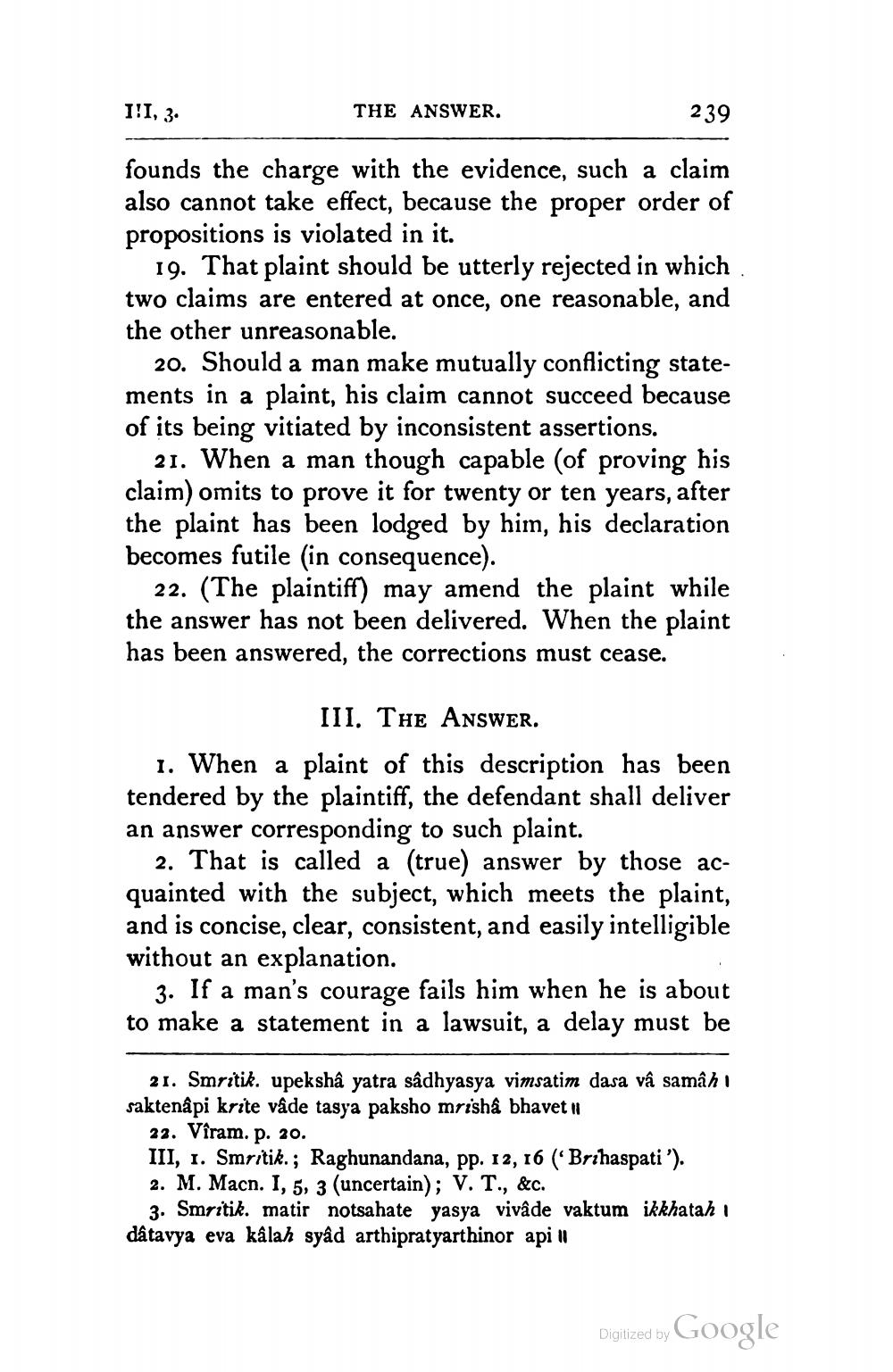________________
I!I, 3.
THE ANSWER.
239
founds the charge with the evidence, such a claim also cannot take effect, because the proper order of propositions is violated in it.
19. That plaint should be utterly rejected in which two claims are entered at once, one reasonable, and the other unreasonable.
20. Should a man make mutually conflicting statements in a plaint, his claim cannot succeed because of its being vitiated by inconsistent assertions.
21. When a man though capable (of proving his claim) omits to prove it for twenty or ten years, after the plaint has been lodged by him, his declaration becomes futile (in consequence).
22. (The plaintiff) may amend the plaint while the answer has not been delivered. When the plaint has been answered, the corrections must cease.
III. THE ANSWER. 1. When a plaint of this description has been tendered by the plaintiff, the defendant shall deliver an answer corresponding to such plaint.
2. That is called a (true) answer by those acquainted with the subject, which meets the plaint, and is concise, clear, consistent, and easily intelligible without an explanation.
3. If a man's courage fails him when he is about to make a statement in a lawsuit, a delay must be
21. Smritik. upeksha yatra sâdhyasya vimsatim dasa va samahi saktenåpi krite vâde tasya paksho mrisha bhavet II
22. Vîram. p. 20. III, 1. Smritik.; Raghunandana, pp. 12, 16 Brihaspati'). 2. M. Macn. I, 5, 3 (uncertain); V. T., &c.
3. Smritik. matir notsahate yasya vivâde vaktum ikkhatahi dâtavya eva kalah syâd arthipratyarthinor api II
Digitized by Google




